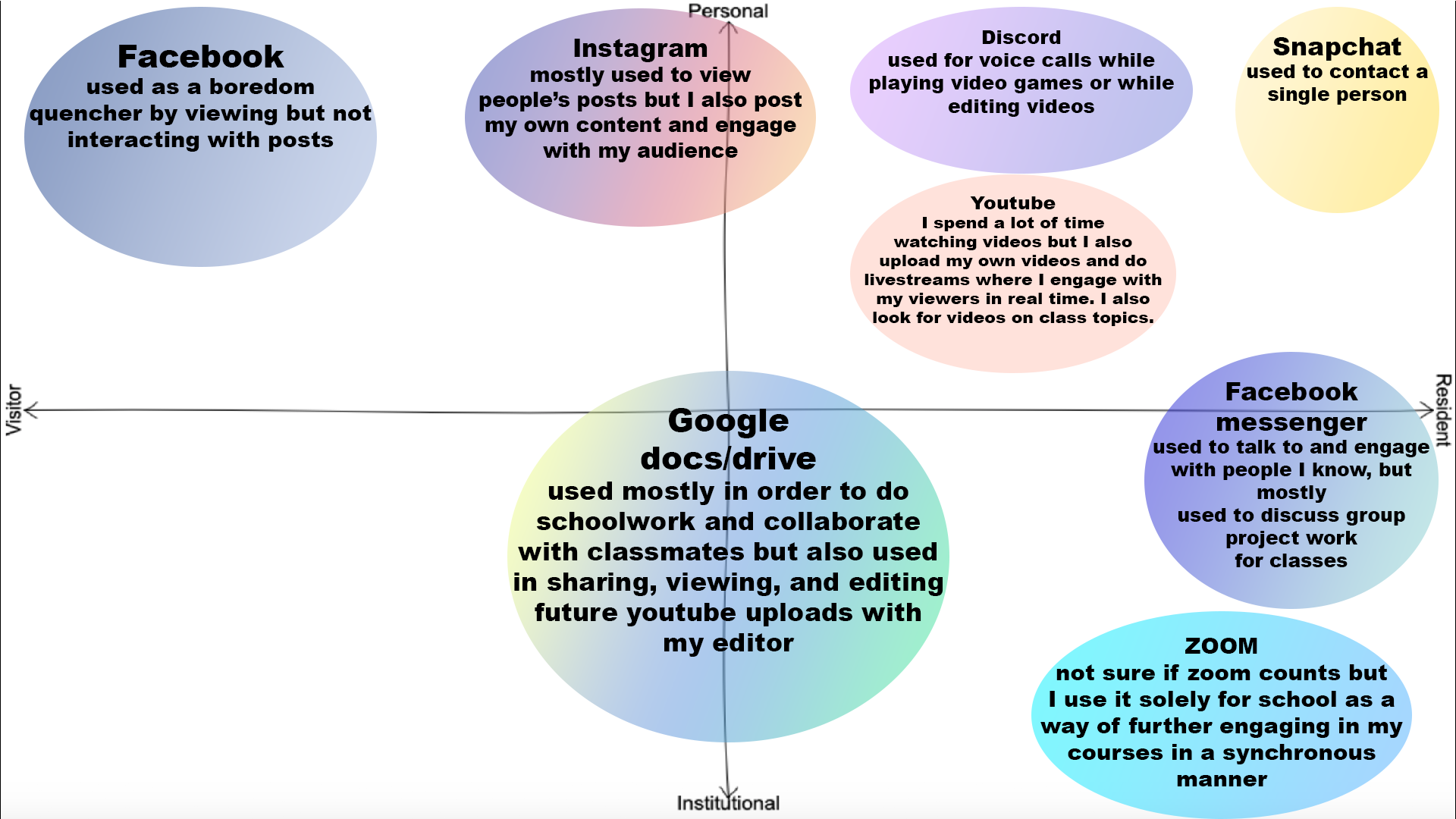Explore how using technology can provide real-time engagement and include answers to the following.
- How does social media help engage in community-based communications?’
As Jessica Clark and Patricia Aufderheide(2013) explained, public broadcasts and media like newspapers were essential in connecting to the public and sharing information with citizens, until the Internet was created, which resulted in the creation of social media further down the line. These innovations have changed the way people learn about everything and has also resulted in user s going from “being an anonymous part of a mass to being the centre of the media picture”. Before social media, people could only connect to those they already know, like family, friends, teachers, and any other person they may meet in-person. Now social media can not only be used to easily connect with those we may be physically separated from, but can also be used to discover and connect with new people, thus creating more connections and our own online communities. Not only does social media and allow us to text or message people we’ve never met and publish photos and videos online, but it also allows us to communicate face-to-face in real-time using applications like Discord or Zoom.
- How does social media challenge community-based communications?
One issue with social media and community-based communications is keeping the attention and participation within your community. As social media allows us to connect with virtually anyone, it also means we connect with those of differing situations, such as race, gender-identity, sexual orientation, and socio-economic status. This also means people within this community are likely to have different thoughts and opinions than you. These differences in opinions can lead to interesting and insightful discussions, but they could also lead to arguments and a disconnect between users.
Considerations when communicating via social media
Are there cultural sensitivities that should be considered?
as previously stated, it’s important to be sensitive of other people’s experiences and background. This definitely includes cultures. Doing or saying anything culturally insensitive is incredibly disrespectful to others and if your social media identity is connected to your professional identity, this can affect your employment in the future. Even so, it’s important that we avoid saying insensitive things to others not because of the risk of unemployment, but rather the risk of offending those in our communities and causing a rift within the community.
What should your PLN say about you as you communicate to the public via social media or communication tools?
The way you behave towards one another and the way you’ve built up your PLN can have an impact on your online identity. By connecting with those of differing backgrounds, you can learn from a point of view that you would never have learned from otherwise. Additionally, having a culturally diverse group within your PLN allows you to learn about more than whatever topics you have in common. You can learn about cultures you are unfamiliar with and then that gives you even more insightful information on differing topics.
What does it mean to balance your professional expectations and your personal beliefs in curating a PLN for the purpose of career development?
Let’s say you have personal beliefs that can be seen as racist or homophobic, or that make you out to be a bigot. Portraying yourself online as a terrible person and spouting out cruel things about other people can give you a poor reputation both online and offline. When putting yourself out there and creating a PLN, you have to understand that you are learning and should be open to learning from different perspectives. Being stubborn and biased and sharing your personal beliefs on what is meant to be a professional account can lead to detrimental effects on your career and the way people see you. In your learning networks there should be a balance between being open about your personal beliefs and keeping things as professional as possible. Yes, it is good to share what you believe so people can have insightful conversations on personal topics, but it’s also important to keep things civil (and of course, don’t be racist or homophobic).
What do you think you need to reflect on (in regards to your PLN or development of a PLN) to adapt evolving social media communication expectations as a community learns more about who you are?
Although I believe I have been welcoming to those of differing backgrounds than me, I feel as though I could do more to connect with my community on another level. I could definitely improve at the balance between sharing personal beliefs and keeping things on the same professional topic. Sometimes sharing information about my personal beliefs can change the beliefs of others, or can result in conversations within my learning network that could greatly change my point of view.
References
Clark, J., & Aufderheide, P. (2013). A New Vision for Public Media – Open, Dynamic, and Participatory. In J. Pooley, L. Taub-Pervizpour, & S. C. Jansen (Authors), Media and social justice (pp. 55-67). New York: Palgrave.


Recent Comments